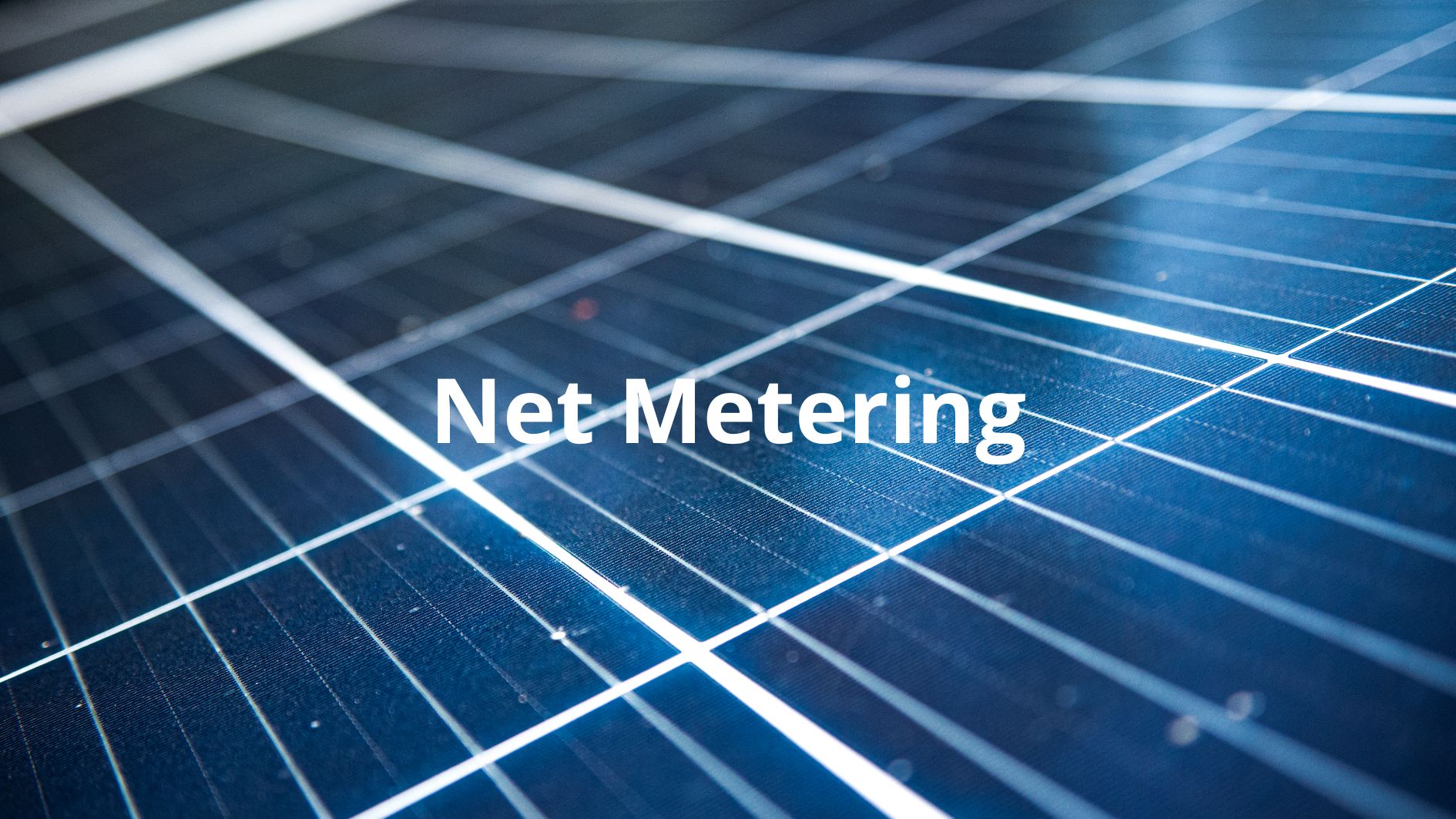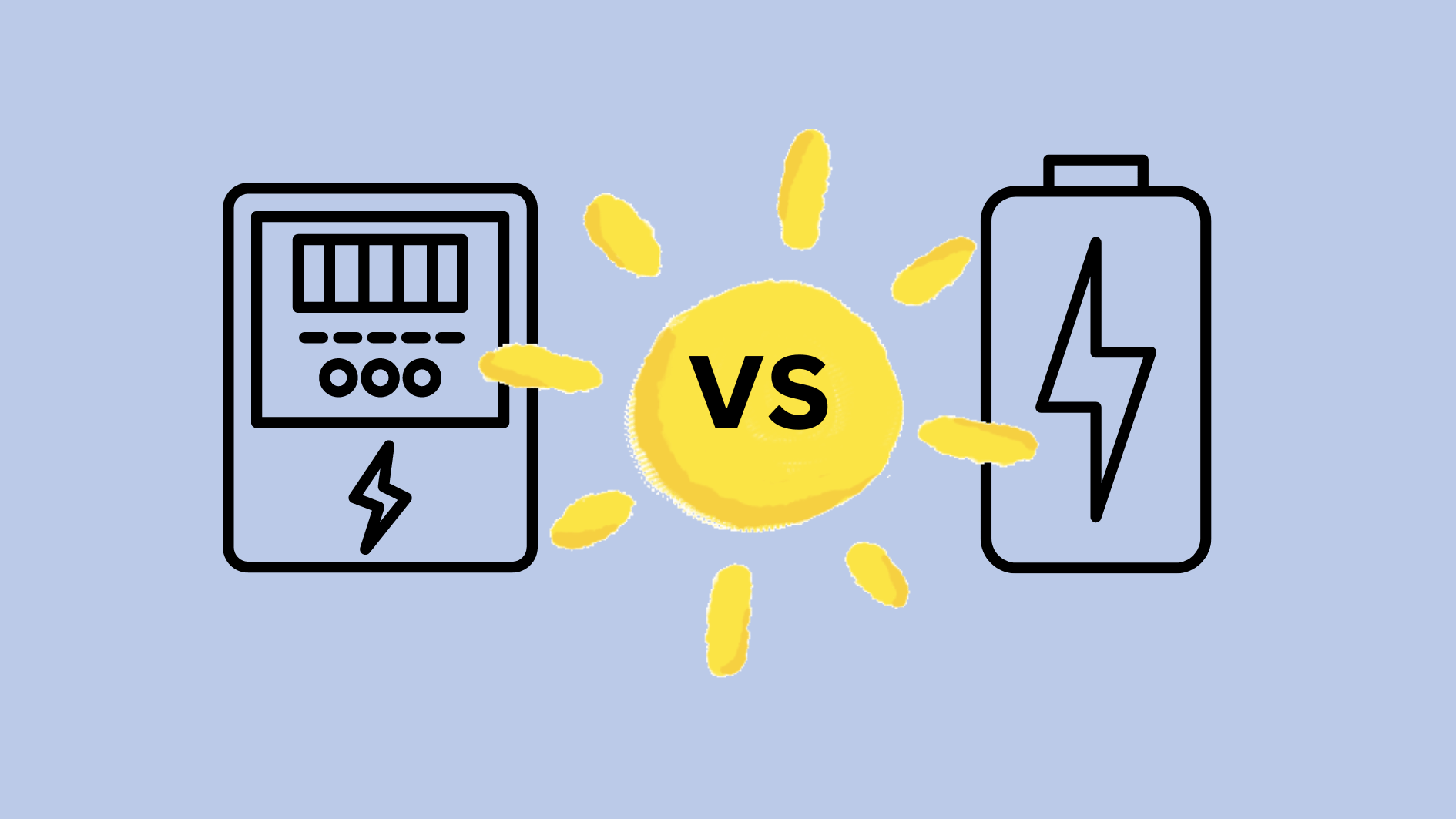Image source: Canva.com
As more homeowners and businesses adopt solar energy, the question of how to maximize the benefits of this renewable resource becomes increasingly important. Two popular options for managing excess solar power are net metering and battery storage. Both approaches offer distinct advantages and cost considerations, but determining which is more cost-effective requires a closer look at how each system works and the financial implications over time.
In this article, we’ll explore the key differences between net metering and battery storage, examining how they impact your energy savings, upfront costs, and long-term financial benefits. Whether you’re looking to reduce your electricity bills, increase energy independence, or make the most of your solar investment, understanding these two options will help you choose the most cost-effective solution for your needs.
Understanding Net Metering
Net metering is a billing system used by utility companies to credit solar energy system owners for the excess electricity they generate and send back to the grid. When your solar panels produce more electricity than your home needs, the excess is exported to the grid, and you receive credits on your electricity bill. Here’s how net metering works:
Electricity Generation
When your solar panels produce electricity, your home uses it first. If the panels generate more power than your home consumes, the surplus is sent to the grid.
Metering
Your electricity meter tracks both the electricity your home uses from the grid and the excess electricity your system sends to the grid. The meter runs forward when you use grid electricity and runs backward when you export electricity.
Credits
For the excess energy you send to the grid, you earn credits on your bill, typically at the same retail rate as you pay for electricity. These credits can offset your future energy use, reducing your overall bill.
Billing
At the end of the billing period, you’re billed for the “net” amount of energy— the electricity you used from the grid minus the credits you’ve earned. If you generate more energy than you consume over a given period, you may only pay fixed connection fees, or even carry forward a credit to future months.
Key Incentive
Net metering is a key incentive for solar panel owners, as it increases savings by allowing you to make use of all the electricity your system produces. However, the exact policies vary by state and utility, and some regions are shifting away from traditional net metering to newer compensation models.

Net Metering: Your Guide to Solar Energy Billing
Types of Net Metering
Full-Retail Net Metering
Full-retail net metering credits excess solar energy at the full retail rate of electricity. If your solar panels produce more electricity than you use, the surplus is sent to the utility, and you receive a credit equivalent to the rate you pay for electricity. This type of net metering ensures you get the full value for your excess energy. States like New Jersey, Oregon, and Florida require full-retail net metering.
Time-of-Use (TOU) Net Metering
Time-of-use net metering involves variable rates depending on the time of day. Electricity is more expensive during peak hours and cheaper during off-peak hours. Under TOU net metering, the credit for excess energy fluctuates based on these rates. Since solar panels often generate the most electricity during the day when off-peak rates apply, you might receive lower credits compared to full-retail net metering.
Avoided-Cost Net Metering
Avoided-cost net metering values excess energy at the avoided cost rate, which is lower than the retail rate. This rate reflects the savings the utility gains by not having to provide you with that electricity. The credit calculation can vary: some utilities credit excess energy instantaneously, while others net credits monthly, applying the full retail rate up to your monthly usage and valuing excess energy at the avoided cost rate.
Different utilities may use variations of these net metering types. It’s important to review your utility’s specific policy, including how credits are netted and any carry-over policies, as these can significantly affect your savings.
Solar Batteries Explained

Solar batteries are energy storage devices that store excess electricity generated by solar panels for later use. They enable homeowners and businesses to maximize their use of solar power, especially when the sun isn’t shining, such as during the night or on cloudy days.
How Solar Batteries Work
Energy Generation
During the day, solar panels generate electricity from sunlight, and any surplus power that isn’t immediately used by the household can be stored in the battery.
Energy Storage
The excess electricity is converted into chemical energy and stored within the battery. Most modern solar batteries use lithium-ion technology due to their efficiency and long lifespan, though some use lead-acid or other storage technologies.
Energy Usage
When solar panels aren’t producing enough electricity (e.g., at night or during cloudy periods), the battery automatically discharges the stored energy, powering the home. This reduces the need to pull energy from the grid, lowering utility bills.
Backup Power
In case of a power outage, many solar batteries provide backup power, keeping essential devices running without interruption.
Key Benefits of Solar Batteries
Energy Independence
By storing solar energy, you become less reliant on the grid, reducing electricity bills and giving you more control over your energy usage.
Maximized Solar Usage
Without a battery, excess solar energy would often be sent back to the grid (especially in regions with net metering). A battery allows you to store this energy for later use, especially during peak rate times or when electricity costs are higher.
Backup Power
Solar batteries can serve as a backup during power outages, keeping critical systems like lighting, refrigeration, and communication devices running.
Time-of-Use Savings
In areas with time-of-use (TOU) billing, where electricity rates vary depending on the time of day, solar batteries allow you to store energy when rates are low and use it when rates are high, increasing your savings.
Types of Solar Batteries
Lithium-Ion Batteries
The most common and efficient type, known for high energy density, longer lifespan, and faster charging. Examples include the Tesla Powerwall and LG Chem.
Lead-Acid Batteries
An older technology, these are less expensive but have shorter lifespans and lower energy density compared to lithium-ion batteries.
Flow Batteries
A newer technology with potential for longer storage periods and more charging cycles, though still less common for residential use.
Factors to Consider
Capacity
This is the total amount of energy the battery can store, usually measured in kilowatt-hours (kWh). Larger batteries can store more energy.
Power Output
This measures how much electricity the battery can deliver at any given moment. Higher power output is essential for running multiple appliances simultaneously.
Cycle Life
The number of times a battery can charge and discharge before its performance starts to degrade. Lithium-ion batteries typically have a higher cycle life than lead-acid batteries.
Cost
Solar batteries can be a significant investment, but prices are gradually decreasing. Incentives, rebates, and the potential for long-term savings can make them more affordable.
Solar batteries are a great way to enhance the efficiency of solar power systems, providing energy independence, backup power, and optimized savings.
Net Metering vs. Solar Batteries: Which Saves You More?
When deciding how to manage the excess electricity generated by your solar panels, two primary options come into play: net metering and solar batteries. Each method offers unique financial benefits, but the savings you realize will depend on your energy usage, local policies, and long-term goals. Here’s a breakdown of how net metering compares to solar batteries in terms of cost savings.
Net Metering
Net metering is a solar power perk that lets you get credit for the excess energy your solar panels produce.
How It Works
Net metering allows you to send the excess electricity your solar panels generate back to the grid. In return, you receive credits on your utility bill. When your panels aren’t producing enough power (such as at night or during cloudy days), you can use these credits to offset the cost of the electricity you draw from the grid.
Cost Savings
With net metering, the savings are straightforward. You essentially “store” your excess energy with the utility company and use it later, reducing your electricity bill. In areas with full retail net metering, the credits you receive are equal to the retail price of electricity, maximizing your savings. However, as more states and utilities shift to time-of-use rates or reduce the credit value for excess power, the savings potential may decrease over time.
Upfront Costs
Net metering doesn’t require any additional equipment beyond your solar panel system, so there are no upfront costs specifically associated with it. This makes it an attractive option for those looking to maximize savings without a significant additional investment.
Long-Term Considerations
The effectiveness of net metering depends heavily on state policies and utility company practices. Changes in net metering laws or reductions in credit rates can impact your long-term savings. Additionally, net metering only provides value as long as you remain connected to the grid.
Solar Batteries
Solar batteries are the secret sauce for making the most out of your solar energy system. They store the excess energy your panels generate during the day, so you can use it later – like at night or during power outages.
How It Works
Solar batteries store the excess electricity your solar panels generate for use later, providing energy independence and backup power during outages. Instead of sending excess power to the grid, you keep it on-site, reducing or eliminating your reliance on grid electricity.
Cost Savings
Solar batteries can offer significant savings, especially in areas with high electricity rates or where time-of-use pricing is implemented. By storing energy and using it during peak rate periods, you can avoid paying higher electricity costs. However, the extent of these savings will depend on your energy consumption patterns and the size of your battery system.
Upfront Costs
Installing a solar battery involves a substantial upfront investment. Battery systems can be expensive, and while prices are decreasing, the initial cost is still higher than relying on net metering alone. However, incentives and rebates can help offset these costs, making batteries more accessible.
Long-Term Considerations
Solar batteries provide long-term energy security and independence from the grid, which can be particularly valuable in areas prone to power outages or where grid electricity is costly. Over time, the return on investment for a battery system can be significant, especially as utility rates increase or net metering benefits diminish.
Net Metering Changes: What You Need to Know

Full retail rate net metering, once a highly attractive incentive, is becoming increasingly unsustainable for utilities. As this program diminishes, the solar industry is facing challenges.
California, once a leader in solar adoption, has seen its solar incentives significantly reduced. The state now employs net billing, a complex rate structure that has eroded solar savings. Under this new system, solar batteries and panels have similar payback periods, making the financial advantage of batteries less clear.
Other states may follow California’s example, potentially making solar batteries a more prudent investment in the future.
Other Reasons to Invest in Solar Batteries
Beyond cost savings, solar batteries offer additional advantages that can make them worthwhile under certain conditions.
For instance, solar panels alone cannot provide power during a blackout. However, adding a solar battery enables you to use stored energy as a backup power source, keeping your home operational during outages.
Solar batteries are also beneficial for homeowners aiming to increase their use of renewable energy. They store excess solar power for later use, helping you rely more on clean energy.
Is Adding a Solar Battery Storage System Worth It?
If your state has favorable net metering policies and your primary goal is financial savings, a battery may not be necessary.
However, if your state has limited or no net metering, or utilizes time-of-use rates, investing in a battery could be advantageous.
To determine if a solar battery is a good fit for your situation, consult with local solar providers. Obtain quotes from multiple installers and evaluate whether a battery would be financially beneficial in your area.





